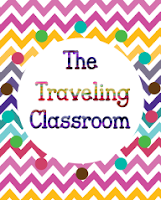Task cards are SOOO versatile! Hooray for a product that can be used over and over! Bring out the laminator!!!
............................................................................................................................................................................................................
Task cards are a great tool to use for practicing skills. These cards are easy to set up and take minimal time to prepare (something we all need!!). They are ready to print and use! Here are some suggested uses for the different levels of differentiation offered for these task cards.
The differentiated task card sets include word problems, word problems with important/helpful words bolded and underlined, and computation only sets. Each set of cards uses the exact same computation problem, just presented in different ways to accommodate the differing needs of your students.
Stations

At a workspace, place the desired set of task cards and answer sheets. Create one station per type of card. Students can visit the station to complete as many task cards as they can during the allotted time. Designate certain tables for certain students, depending on their level of need, OR allow students to challenge themselves to the cards that they feel motivated to try.
This can be a tricky balance, depending on the number of students you have and their levels of self-motivation. But I believe that students want to feel successful and want to feel proud of their hard work. Most of the time, students will choose the cards that are right for them! Some just MIGHT need your guidance. :)
Board Games
Use with literally ANY simple board game. Before students take a turn, they will complete a task card. Get a correct answer (with as many retries as needed, especially for those who struggle!), and get to move ahead on the board, add a piece on connect-4, etc.
Around the Room
Students have so many needs, outside of simply learning a skill! It's so challenging to accommodate for all of those needs at once! An around the room game helps with a student's need for movement and control.
Hang the cards around the room or even in the hallway, using any number of sets and any number of cards you prefer. Students will walk from card to card, which gives them the movement they crave.
Allow students to choose any card they want in any order they want. The point is that they are practicing the skill, not that they can walk in a clockwise circle. Giving them choice in this area will help them to feel in control and give them a sense of power in their education. Then, maybe they will feel like battling you over EVERY OTHER DETAIL of the day... just a little less!
And like in the stations, as is appropriate for your group, allow students to choose which level of difficulty they are ready for on the task cards.
Christyna, with Inspired in 4th, has a great way that she uses task cards around her classroom! Check out her Instagram post!
Whole Class Check
Display a task card on the overhead using a document camera for paper cards or using a projector using the digital product. Students complete their work on dry erase boards and show their answers when finished. You can look around the room quickly to see who understands and who needs extra help.
For this, start with the easiest level of task card and move up to the most complex. Students will build confidence when they are able to complete the first few, even if the more difficult cards are too hard.
 Morning Work / Exit Tickets
Morning Work / Exit Tickets
Even though most of my products include exit tickets, you can use any card as a morning work exercise or as an exit ticket. Have a basket of cards set out for students to grab.
Students complete a card while waiting for the day to begin or to end a lesson.
Optional Supports
Answer Card Sheet: The answer card sheets have answers in a random order, not in the order of the questions. Leave a sheet of potential answers at the table OR give students a copy of the answer cards. Students can then determine if their answer is in fact one of the possible answers and can check them off as they use them. This adds a level of self-correction, without giving the answer to them completely. If a student gets an answer that isn't on a card, they know to check their work again.
Answer Cards: Cut out the answer cards. Place answer cards on the table. Students can then match the answer cards with the task card, using a process of elimination to determine their answers,
Limited Answer Cards: If students are easily overwhelmed by large amounts of work, limit the number of task cards and answer cards at a station. Maybe 4 is enough for one student. Leave only 4 cards and only 4 answer options. This will increase chances for student success! And really, if a student shuts down when overwhelmed, completing 4 task cards with success and confidence is better than the self-esteem blow that comes with competing none!
Answer Key: Leave an answer key on the table for students to check their answers. They will need to have paper to show their work (even though, of course, NO student ever would just copy the answers....). This just takes some of the pressure off of students who might get easily frustrated.
Answer Key Take 2: Leave the answer key with a trusted student. Some students will really understand a skill well and might make great teachers for students who are struggling. These students could help students who are struggling to understand a skill.
 Earlier this week I was FINALLY putting up my Christmas tree (yep, 15 days before Christmas - WHOOPS!), and I came across two ornaments that I received as gifts from some students a few years ago. These two students were part of a very memorable class - one that we referred to as family.
Earlier this week I was FINALLY putting up my Christmas tree (yep, 15 days before Christmas - WHOOPS!), and I came across two ornaments that I received as gifts from some students a few years ago. These two students were part of a very memorable class - one that we referred to as family.  There were two girls that were particularly blown away by this concept, and they have both reached out to me over the years. Family. For life. (And if you're wondering if I'm crying right now, I am. It's fine. I'm totally fine......)
There were two girls that were particularly blown away by this concept, and they have both reached out to me over the years. Family. For life. (And if you're wondering if I'm crying right now, I am. It's fine. I'm totally fine......)




























